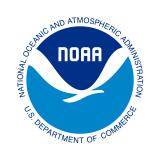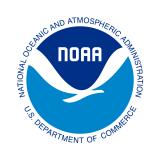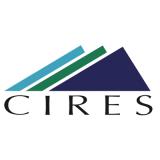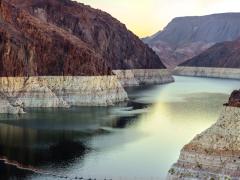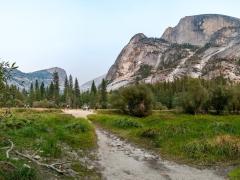NIDIS to Lead AMS Sessions on Deciphering U.S. Drought in 2030, Drought Prediction, More
The American Meteorological Society’s 104th Annual Meeting is fast approaching. This year’s meeting, which will be held on January 28–February 1 in Baltimore, will focus on the theme, "Living in a Changing Environment." This theme centers on “defin[ing] the steps and scientific advances necessary to minimize the impacts of climate change, and to engage policy makers and the public in that work.”
Climate change is causing the probability of extreme events, like drought, to change. This year’s AMS annual meeting will feature a number of drought-focused sessions and town halls, covering drought preparedness in a changing climate; advancements drought analysis and prediction; flash drought monitoring and prediction in a changing climate; soil moisture data quality; and tools for real-time monitoring of the climate.
Below, explore select AMS sessions and town halls hosted by NOAA’s National Integrated Drought Information System (NIDIS) and partners. Or, view all conference sessions on the AMS website.
Town Hall Meetings
Deciphering U.S. Drought in 2030
Organizer: Meredith Muth, NOAA/NIDIS
Facilitator: Dr. Sarah Kapnick, NOAA Chief Scientist
Date/Time: Monday, January 29, 2024 from 12:15 p.m.–1:15 p.m. ET
Description: “How do we understand and address drought in the U.S. in the context of a changing climate, advancing technology, and maturing drought services? Dr. Sarah Kapnick (NOAA Chief Scientist) will moderate a panel with expertise spanning a variety of regions and sectors impacted by drought. Panelists will provide their perspectives on meeting future challenges related to drought preparedness. The panel will discuss how recent changes in drought and climate have affected parts of the U.S. differently; how factors such as changing water demand and infrastructure investments may affect the nature of drought and its local-scale impacts in the future; how to manage future drought risk in the context of other hazards; and what drought information and services are needed to help communities to be more drought-ready by 2030.”
Data Quality and Data Assurance for Soil Moisture Datasets
Organizer: Pamela N. Knox, University of Georgia
Date/Time: Wednesday, January 31, 2024 from 12:15 p.m.–1:15 p.m. ET
Description: “There has been an increase in soil moisture data collection around the world. But the value of this data is only experienced when it is accurate and trusted. The U.S. soil moisture community has formed the National Coordinated Soil Moisture Monitoring Network (NCSMMN) to provide structure to the development of protocols, practices, and products to the public in an effort that will deliver high quality soil water information for the public good. As a part of this effort, in 2023 the NCSMMN formed a working group on Data Quality in 2023 to produce a good practices guidance document that will inform data producers and providers on how soil moisture data can be validated and maintained in a high quality state. A draft of the proposed guidance document will be presented and an interactive discussion with attendees will provide further public input to this community document. Installation, metadata, scaling, and troubleshooting are some of the topics which will be covered in this forum.”
Conference Sessions
Advancements in Analysis and Prediction of Drought
Conference: 38th Conference on Hydrology
Chairs: Timothy M. Lahmers, NASA; Joshua Roundy, University of Kansas; Molly Woloszyn, NOAA/NIDIS, Cooperative Institute for Research in Environmental Sciences (CIRES); Maya Robinson, NOAA; Jason A. Otkin, University of Wisconsin - Madison; and Jing Tao, Lawrence Berkeley National Laboratory
Date/Time: Wednesday, January 31, 2024
- Oral Session I: 8:30 a.m.–10:00 a.m. ET
- Oral Session II: 4:30 p.m.–6:00 p.m. ET
- Poster Session: 3:00 p.m.–4:30 p.m. ET
- ePoster Session: 3:50 p.m.–4:30 p.m. ET
Description: “Drought is a multi-faceted phenomenon that challenges our current prediction capabilities, yet its environmental and economic consequences are among the most serious of all natural disasters. In the changing environment of a warming climate, drought is expected to increase in frequency, duration, and intensity at both regional and global scales, and this will result in increasing environmental security risk. Improving analysis and prediction of all drought types requires the use of multiple data sources, including in-situ and remote-sensing data, surface observations, and indicators of societal impact. Satellite hydrological variables and vegetation indices have contributed dramatically to our understanding of the mechanisms of drought occurrence and development, while facilitating the separation of the drought signal from normal hydrologic and vegetation conditions. Remotely sensed land observations are used to force or parameterize models, and the hydrological outputs provide the foundation for existing drought indicators.
However, making significant improvements in monitoring and prediction will not only require advances in understanding drought mechanisms, but also of the societal impacts and how to better manage water resources. There are still many open scientific questions related to data fusion, integration of drought indicators, emerging social media data sources and the optimal combination of these data sets for providing insights to climate, environmental security, and societal changes with respect to drought events. Addressing these outstanding challenges related to drought monitoring and prediction directly aligns with this year’s AMS Meeting Theme of “Living in a Changing Environment.”
Flash Drought Monitoring, Predictability, and Impacts in a Changing Climate
Conference: 38th Conference on Hydrology
Session Chairs: Andrew Hoell, NOAA/Physical Sciences Laboratory; Mike Hobbins, NOAA/Physical Sciences Laboratory, CIRES; Hailan Wang, NOAA/Climate Prediction Center; Jason A. Otkin, CMISS, University of Wisconsin – Madison; Jordan I. Christian, University of Oklahoma
Date/Time: Wednesday, January 31, 2024
- Oral Session I: 10:45 a.m.–12:00 p.m. ET
- Oral Session II: 1:45 p.m.–3:00 p.m. ET
- Poster Session: 3:00 p.m.–4:30 p.m. ET
Description: “Flash drought, characterized by its unusually rapid intensification, has garnered increasing attention in the physical science and impacts communities in recent years due to its compounding and cascading physical causes and socioeconomic effects. [Presentations will focus on] advanc[ing] our ability to monitor, understand, and predict the complex interactions between terrestrial, atmospheric, and oceanic processes that can be used to anticipate the effects and improve early warning of flash droughts in our changing climate...[and furthering] our understanding of anthropogenic effects on flash drought and our understanding of the linkages between flash drought and impacts on energy, food, health, and water security.”
The Multifaceted Role of Evapotranspiration: Impacts on Ecosystems, Agriculture, Drought Monitoring, and Climate
Conference: 38th Conference on Hydrology
Session Chairs: Kyle R. Knipper, USDA Agricultural Research Service; Nicolas E. Bambach, University of California Davis; Martha C. Anderson, USDA Agricultural Research Service; William Kustas, Hydrology & Remote Sensing Lab, USDA; and Yun Yang, Mississippi State University
Date/Time: Wednesday, January 31, 2024
- Oral Session I: 10:45 a.m.–12:00 p.m. ET
- Oral Session II: 1:45 p.m.–3:00 p.m. ET
- Poster Session: 3:00 p.m.–4:30 p.m. ET
Description: “Evapotranspiration (ET) is a fundamental process that influences a wide range of applications across scientific disciplines such as ecology, agriculture, and meteorology. In ecology, ET is critical in regulating the water balance of ecosystems, affecting plant growth, carbon uptake, and nutrient cycling. Understanding ET patterns and dynamics is essential for predicting ecosystem response to changes in environmental conditions, such as climate or land use change. In agriculture, ET is critical for estimating crop water requirements and scheduling irrigation, helping to optimize crop yield and reduce water use in water limited regions. It can also indicate drought conditions, providing insights into water availability and potential crop stress. Ultimately, ET is critical for understanding the Earth’s energy balance and the role of the water cycle in regulating the climate system. By accurately modeling and monitoring ET, we can improve our ability to understand climate change impacts on water resources and ecosystems, while increasing the resiliency of these systems.” These sessions will focus on novel approaches focusing on ET field to remote sensing monitoring and modeling.
Tools and Products for Real-Time Monitoring of the Climate
Conference: 28th Conference on Applied Climatology
Session Chair: Rebecca Bolinger, Colorado State University
Date/Time: Monday, January 29, 2024 from 10:45 a.m.–12:00 p.m. ET
Description: “As we continue to experience the effects of a changing climate, it is becoming increasingly important to monitor these changes as they’re happening. There are a plethora of climate monitoring products that are publicly available. Examples of federally produced tools include NOAA’s Climate at a Glance and the National Weather Service’s Advanced Hydrologic Prediction Service (AHPS). Federal and academic partnerships have resulted in the production of products such as WestWide Drought Tracker from the Western Regional Climate Center and GrassCast from the USDA and National Drought Mitigation Center. State Climate Offices also provide suites of real-time monitoring products, including the Oklahoma Mesonet and CoCoRaHS Condition Monitoring from the Colorado Climate Center.
In addition to the wide range of products in the public domain, industry climate service providers are providing real-time monitoring tools to meet the needs of their specific users. This session will be an opportunity for climate service providers to showcase their monitoring products that are delivering up-to-date climate information to broad audiences.”
Applications of Artificial Intelligence for Improved Estimation and Prediction of Extreme Precipitation and/or Drought in Weather and Climate
Conference: 23rd Conference on Artificial Intelligence for Environmental Science
Session Co-Chairs: Phippe E. Tissot, Texas A&M University; Alexandra Mazurek, Colorado State University
Date/Time: Thursday, February 1, 2024
- Oral Session I: 8:30 a.m.–10:00 a.m.
- Oral Session II: 1:45 p.m.–3:00 p.m.
Description: These two sessions will feature presentations on “leveraging AI tools to improve understanding and/or forecasting abilities of extreme rainfall and drought events.”
For more information, visit the full AMS conference schedule.




